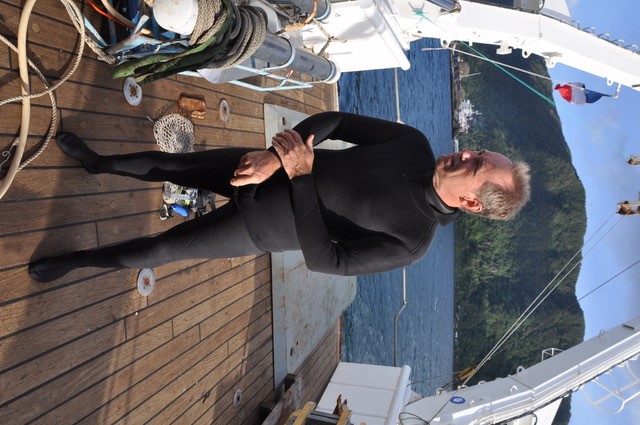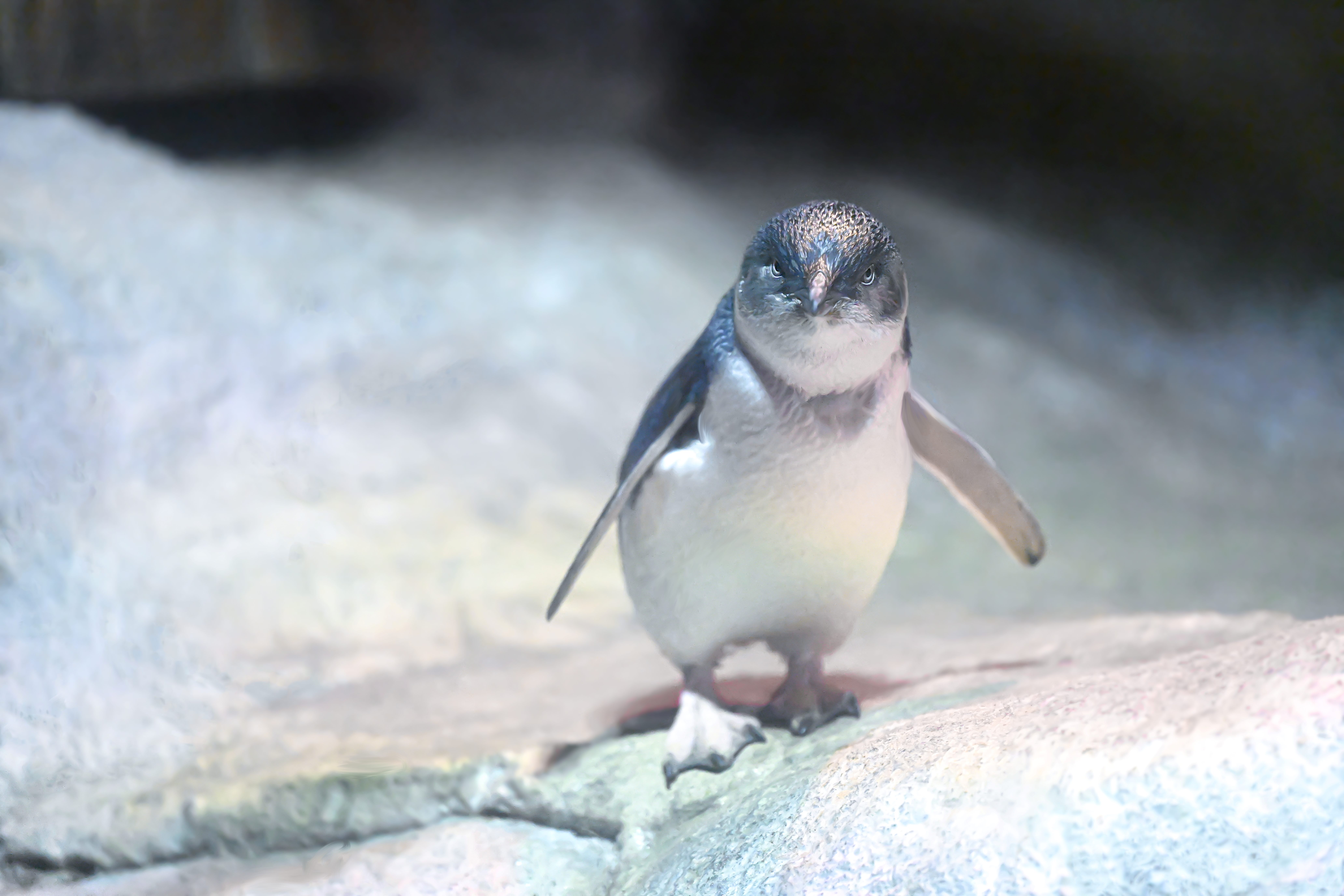He gained his PhD from ANU, with postings in France, New Caledonia and Australian Universities.
He has published more than 70 scientific papers on tropical paleoclimatology and the El Niño phenomenon.
He is now the Regional Director of CNRS Representative Office for OCEANIA, and kindly agreed to answer my students’ questions as they study ‘the environment’ in French.
First of all, he explained to my class that Paleo means ‘ancient’, so essentially how we seek to understand climate in the past thanks to indicators like stones, fossils, corals sediments etc.
For example, he spent a lot of his career engaged in carrying out ‘le carottage des coraux’.
In fact, most people are familiar with the growth rings seen in tree cross-sections, but few are aware that similar growth patterns are visible in skeletons of reef-building corals.
Scientists can take a look back in time to determine when temperatures were warmer or cooler, by simply examining the depth of each growth band.
From this, we know that Australia twenty thousand years ago was colder and dryer, for example.
My students also discovered more about ‘le CNRS’.
The CNRS (French National Centre for Scientific Research) is the largest research organisation in Europe with over 32,000 staff and over 1000 research units.
It could be the equivalent of the Australian CSIRO.
‘Mais quelle est la différence entre les chercheurs australiens et les chercheurs français?’ asked one of my students
“Aucune,” said Professor Corrège.
“Science is universal. Except for one thing: in France, researchers work in labs attached to universities while the CSIRO has its own laboratory.”
“Quels conseils donneriez-vous à un élève qui veut être chercheur?” another asked.
“My advice to a student who wants to be a researcher is to be passionate about Science. It’s a very competitive sector, you must not count your hours.”

Professor Thierry Corrège inspired my students in our studies on the environment. PHOTO: Jean-Luc Schneider.
A researcher reads first what has been done on a topic he or she studies, then, after doing their own research, they start to publish findings and share the discovery with the international scientific community through conferences and wider publications.
My students discovered that Professeur Corrège has been involved at least in 25 projects during his career, and has been in the field (sur le terrain) in the Pacific Islands – New Caledonia, Fidji, Vanuatu to name a few places.
My students also started to understand more about climate change when the expert explained how oceans are getting warmer, causing the death of corals.
“Mais comment arrêter le réchauffement climatique?” asked one of my students.
“Ca va être compliqué!” he answered.
We need to reduce our consumption of electricity, coal and petroleum.
But we can start with simple gestures: switch off the lights, don’t use too much air conditioning, avoid extra heating by putting a jumper on, and finally, maybe walk more or ride instead of using the car because petroleum is one of the biggest causes of global warming.
And then one student asked about the CNRS project involving little penguins on Philip Island.
The ACCES project led by Dr Claire Saraux and Australian Associate Professor Andre Chiaradia is the result of a partnership between Phillip Island Nature Parks, CNRS, the Swedish University of Agricultural Sciences (involving Associate Professor Jonas Hentati-Sundberg) and the Penguin Foundation.
It is studying the mechanisms underlying the effect of the marine environment on the population dynamics of marine predators.
And what my students learned about the project was fantastic.
Firstly, little penguins or 'manchots pygmées’ are the biggest colony of Southern Hemisphere (40,000 animals).
The effects of climate on the population operates not only directly but also indirectly via changes in habitat or food resources.
However, observing the marine environment is very complex and often prevents the acquisition of data.
To have a clear picture of the underwater world, researchers are using a new high-tech sailing drone funded by the French CNRS, which will give them a clear picture of what predators and prey lie under the water.
The sailing drone surveys the waters off Phillip Island and is collecting vital information on water temperature, fish abundance and salinity.
It sends sound to the bottom of the ocean, and the echo is translated into images, which will be used by scientists in the future.
"This way, researchers can understand how climate change can alterate penguin’s food and project for the future," said Professeur Corrège.
One essential question came at the end:
"Pourquoi faire des recherches sur l’environnement?" Why to do research on environment?
"Because we live in this environment. We must understand it, understand how it changes and how we need to adapt ourselves to it," reinforces the expert.
The world is going to be transformed in 20 years’ time. The average temperature will be one degree more.
Australia will have more heatwaves, more cyclones and typhoons. It’s going to be the norm. So, we will need more researchers, scientists and engineers in the future.
Finally, my students got to understand the importance of an eco-system: every plant or animal has an importance on earth and plays a vital role.
To tell you the truth, my students fell in love with the story of the little penguins of Philip Island and now all the class is asking to see Happy Feet.
It’s funny how one detail can captivate students and make them remember the importance of more profound issues.














